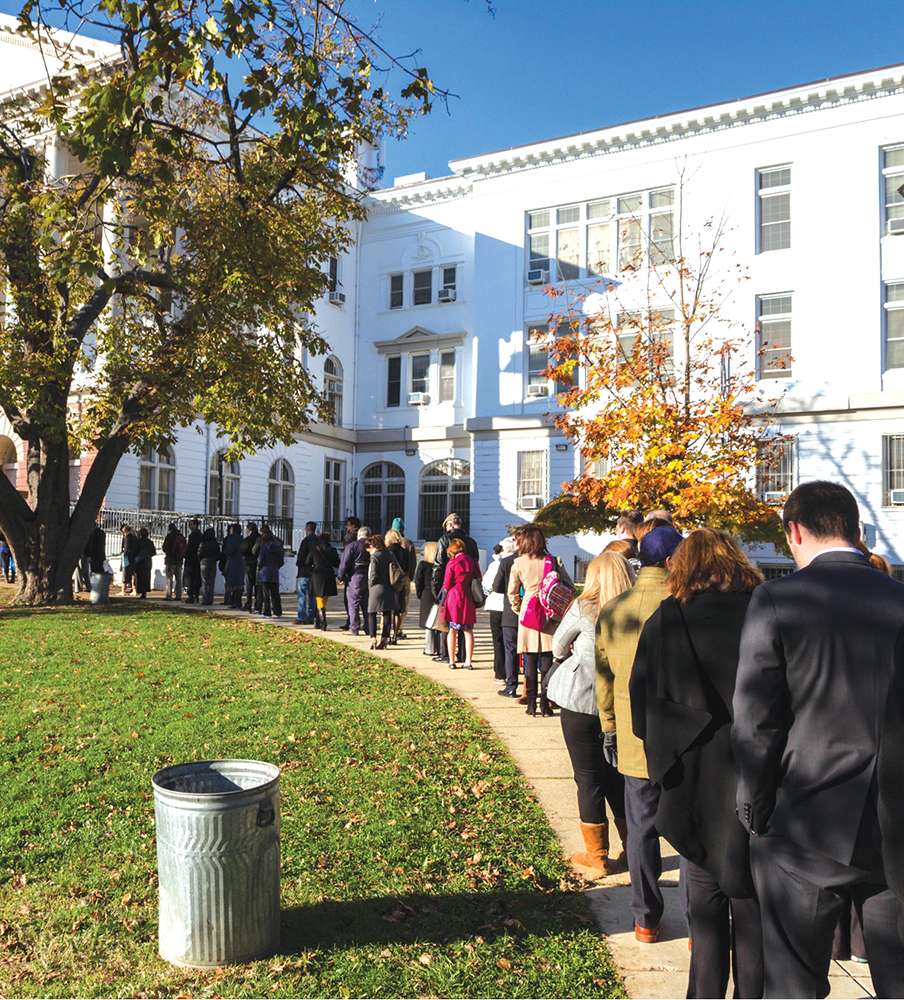
Redistricting could affect assignment of polling places, like Duke Ellington School, seen here on Election Day in November 2012.
The 59-page “2013 Precinct Boundary Efficiency Plan,” released to the public in October 2013, aimed to fix various issues with the way that Advisory Neighborhood Commission Single Member Districts are defined. The board sought to realign voting precincts with SMDs as well as revise the precinct numbering system to reflect the precincts designated as wards.
Tamara Robinson, public information officer for the D.C. Board of Elections, said that while the board had hoped to implement the changes before April 1, concerns voiced by residents over the confusion the new plan could cause delayed the process.
“We had an original deadline for public input in October. We got some feedback, but we had some more folks that said, ‘You know what? We still have some concerns,’” Robinson said. “That feedback and just not wanting to implement such a huge change in the middle of such an important race were a combination of factors that led us to determine that we would put things on hold for the moment.”
There are currently 296 SMDs in the District and 143 voting precincts. Because many precincts encompass multiple SMDs, voters are often unaware of where they are eligible to vote. Adding to the confusion, voters are sometimes forced to vote at different polling locations for the same election.
Longtime local activist Dorothy Brizill of the government watchdog group D.C. Watch, said the process in developing the plan was mishandled by the board, and that the board should not move forward with any changes until the public has more information.
“The Board of Elections and the staff came up with a redrawing of the boundaries and never consulted with anybody. I go faithfully to every monthly meeting of the Board of Elections — the plan was never discussed, never raised. They never solicited input from anybody,” Brizill said.
Chairman of the D.C. Council Phil Mendelson, up for reelection this year, was quiet on the merits of the proposal, although he emphasized the need for public input in its development.
“Chairman Mendelson has not been involved in this issue. However, he believes that the Board of Elections should be guided by the views of the community,” Mendelson’s Communications Director Karen Sibert wrote in an e-mail to The Hoya.
Brizill also said that, while she understands the argument for the proposed changes, they must be done not only with more public input, but with the understanding of the voters who will be affected.
“The timing was odd. There was no planning, and you’re left to scratch your head and say, ‘Wait a minute, why are we doing it this way?’” Brizill said. “I think there is a case to be made in terms of the confusion at the ballot, but it’s a case to be made to the people that have to vote; you have to have their input.”
Robinson, who acknowledged many of the challenges presented by the proposal, said that the board hopes to revisit the plan in the months between the April primary and the November general election.
“Hopefully we’ll be able to go back and revisit it sometime in May or June. But right now our focus is on getting past April 1,” Robinson said.
Brizill said it makes more sense to redraw precincts during non-election years, when a major race would not overshadow any significant changes to voting practices.
“We have these off years that don’t have an election in them at all, like next year. Why not make the boundary changes effective 2015? We don’t have any elections in 2015. That way any kinks that need to be worked out can be worked out,” Brizill said.
Ultimately, any proposal put forward by the Board of Elections must be approved through subsequent legislation by the D.C. Council, though for Brizill, the dearth of transparency in the process may be a harbinger for future troubles.
“Until the Board of Elections is forthcoming — and by forthcoming I mean have maps that show existing boundaries and what you want to change it to — the process has to stop,” Brizill said.














